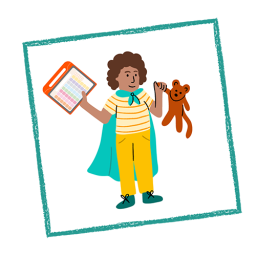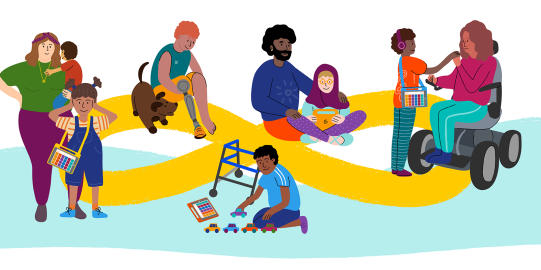When you heard that your child is autistic, you probably had a lot of reactions. You were concerned, scared and confused. You probably had to face a lot of preconceptions. The doctor likely gave you a very dire speech about all the things your child wouldn’t be able to do.
Take a deep breath. It’s going to be ok.
Every autistic person is different, and where we start doesn’t necessarily determine where we end up. One of the biggest factors is you - you can help your child a great deal by respecting them, and accepting them for who they are. One of the ways you can do this is by looking at Augmentative and Assistive Communication (AAC) to help them communicate.
Four truths from an Autistic Adult
As a nonspeaking autistic adult, I want to share with you four truths:
1. There are no prerequisites for AAC.
This is a big one, and something you are going to have to push for on your child’s behalf. They don’t need to “prove” they can use a basic system before they move to something more robust (how can you “prove” your competence when you are only given access to a dozen words?). Believe that they can achieve.
2. You can communicate without speech
We all have multiple forms of communication outside of mouth speech.
Think about it. Every day you text, message, email, and chat online. You wave, point, clap, do a little dance, that sort of thing. These are all valid methods of communication for mouth speakers. They should absolutely still be valid for nonspeakers. While your child may not be able to text, they can certainly point, clap, do a little dance, and express themselves in their own way. This, just like mouth speech, is valid. I use AAC all the time, but I also use gestures, texts, emails, emojis, memes, instant messages, etc.
3. AAC comes in many forms
While all forms of AAC are valid, some are more robust than others. The AAC user is the one who needs to make the decisions on what fits them best. It can take some time to find the method that fit them - I prefer typing to communicate, while others might prefer symbols. There is no hierarchy of AAC use. Text is not inherently “better” or “more mature” than symbols. One thing to keep in mind - choose robust systems that do not actively limit vocabulary. Many of us AAC users use multiple forms of AAC. For instance, I use Proloquo4Text most often; sometimes I use Proloquo2Go when typing is hard; and sometimes I just communicate by pointing or gesturing. Communication is complex!
4. AAC does not limit speech development
AAC is proven not to hinder speech development, and it can help autistics who use mouth speech. Some children using AAC will learn to speak later on, and AAC will help fill in the gaps as they develop more mouth words. Some won’t ever mouth speak, but will become more proficient with their AAC (and may discover other methods that they prefer). Some will mouth speak but find speech tiring, exhausting, and stressful, and find AAC helpful for those times. Some might be over-verbal as children, but as they grow up find speech more stressful and rely on AAC as teens or adults.
AAC is not a barrier to a full life
There is no correlation between speech and intelligence, or competence. Mouth speech, or lack thereof, is not an indicator of, or barrier to having a full life. Your child’s life may, and likely will, look different from their peers, but it isn’t a bad one. We are seeing more and more nonspeaking autistics become self advocates, go on to college, write poetry, write books, share their thoughts online. This is thanks to advances in AAC and the belief that we have something to say! My life as a nonspeaker is different, occasionally more frustrating, but I enjoy the life I have and have found ways to accommodate my needs.
Change happens over time
Keep in mind that where a child is at their diagnosis is nowhere close to where they will end up as tweens, as teenagers, as adults.





